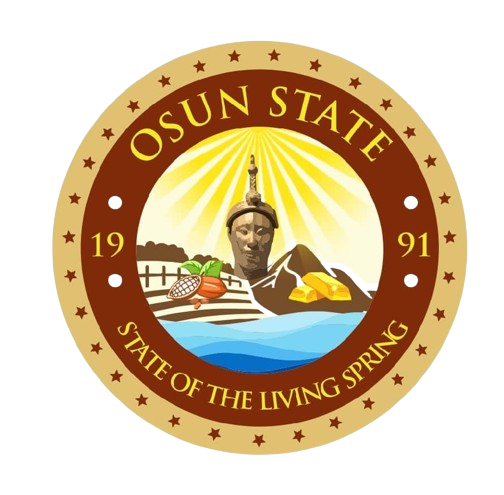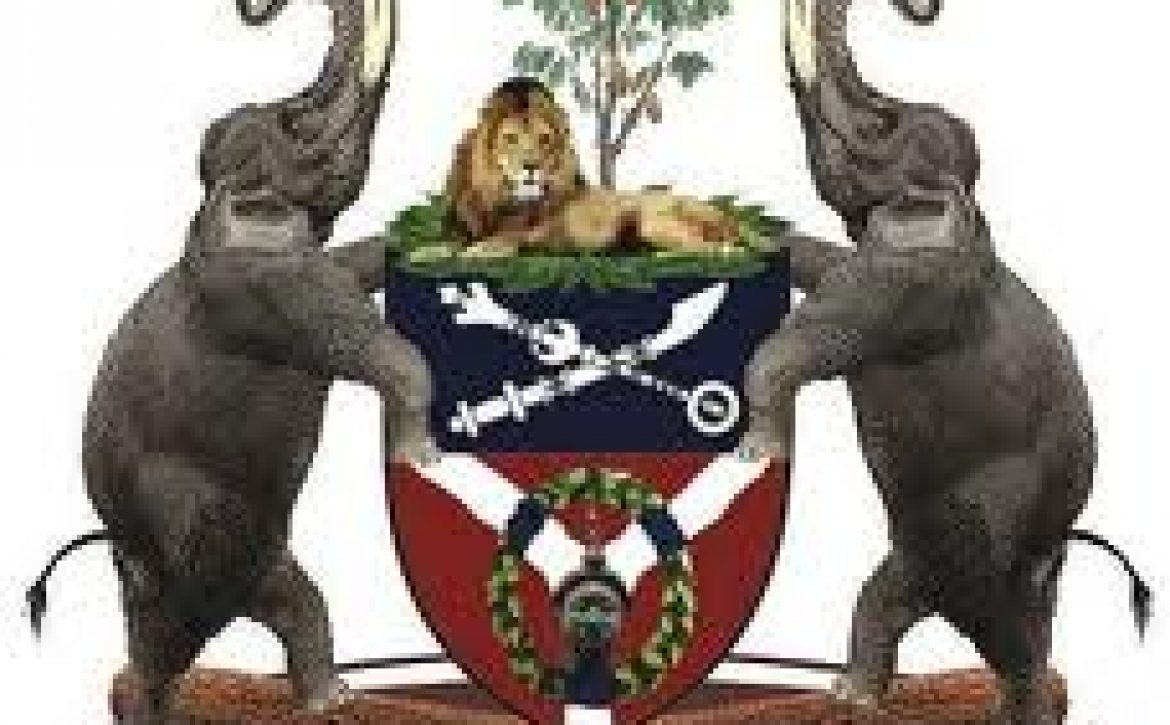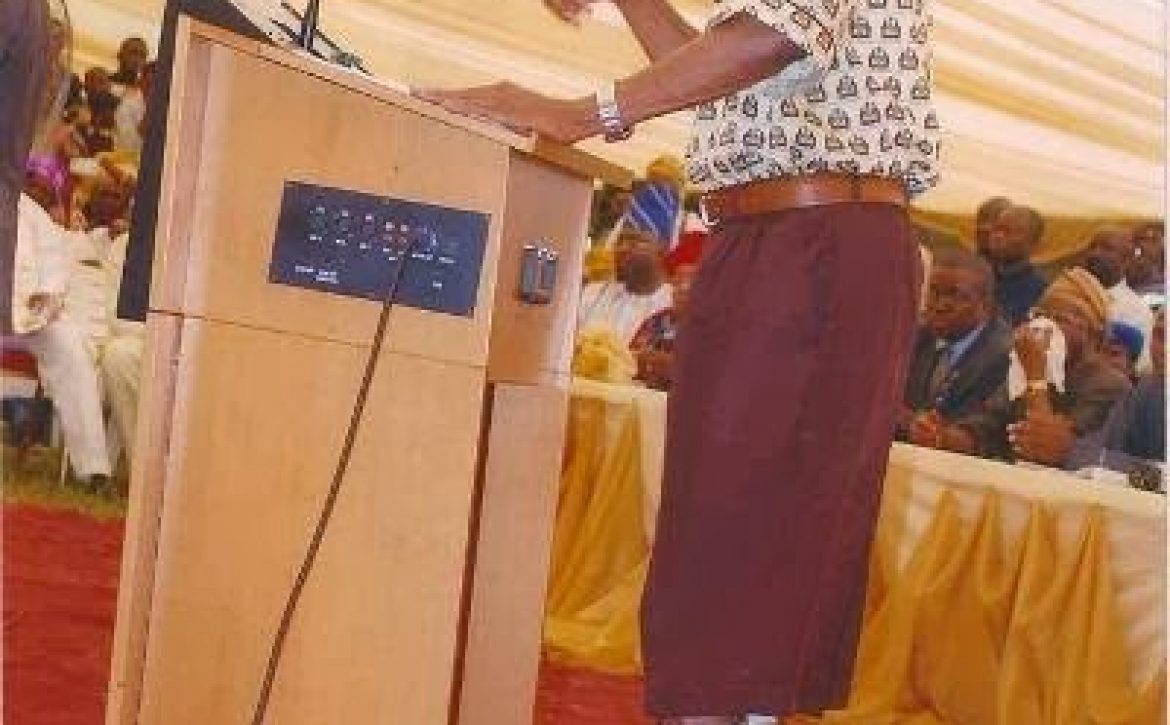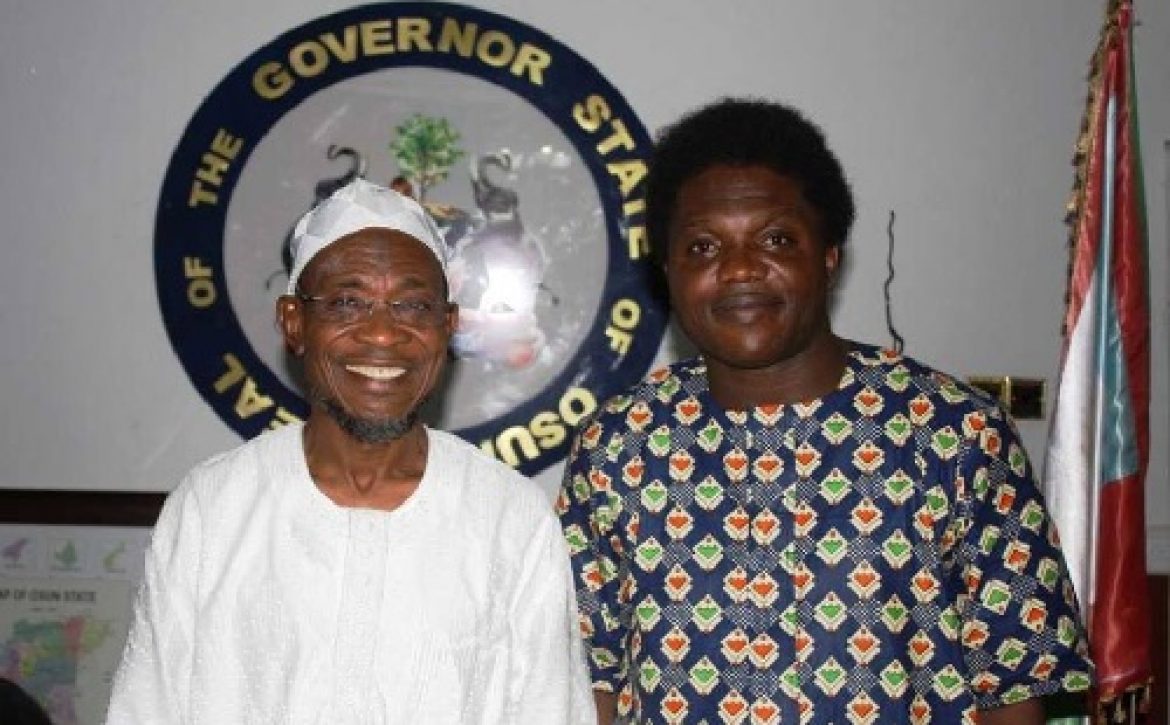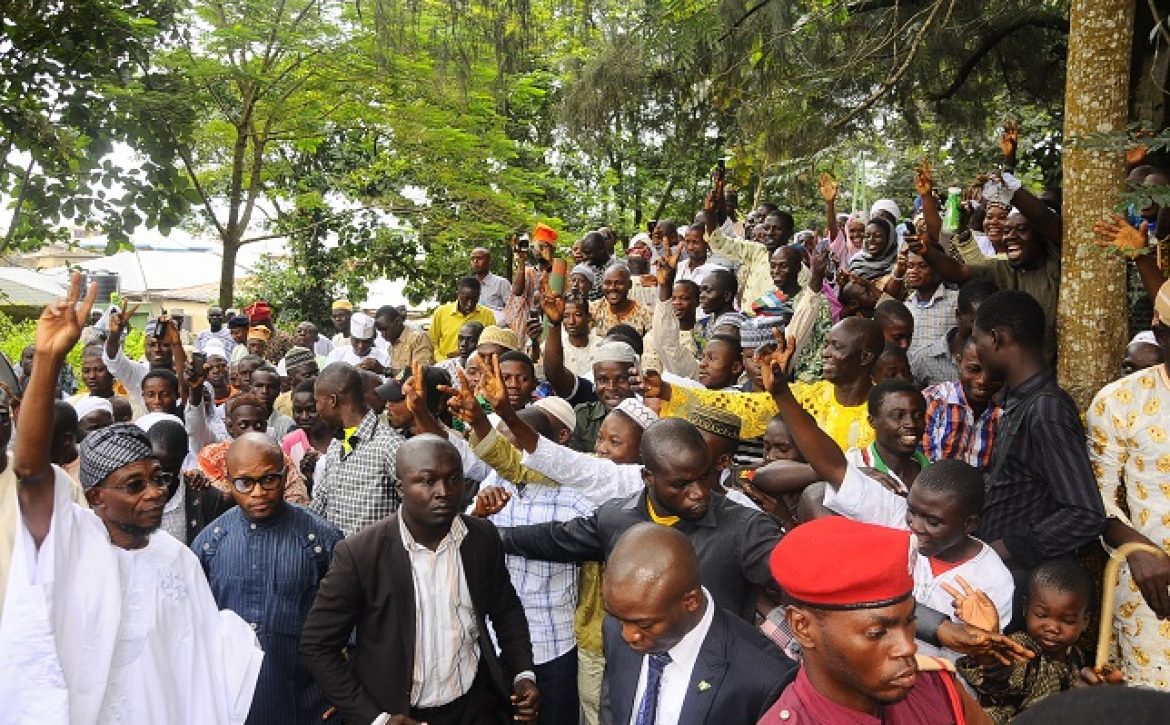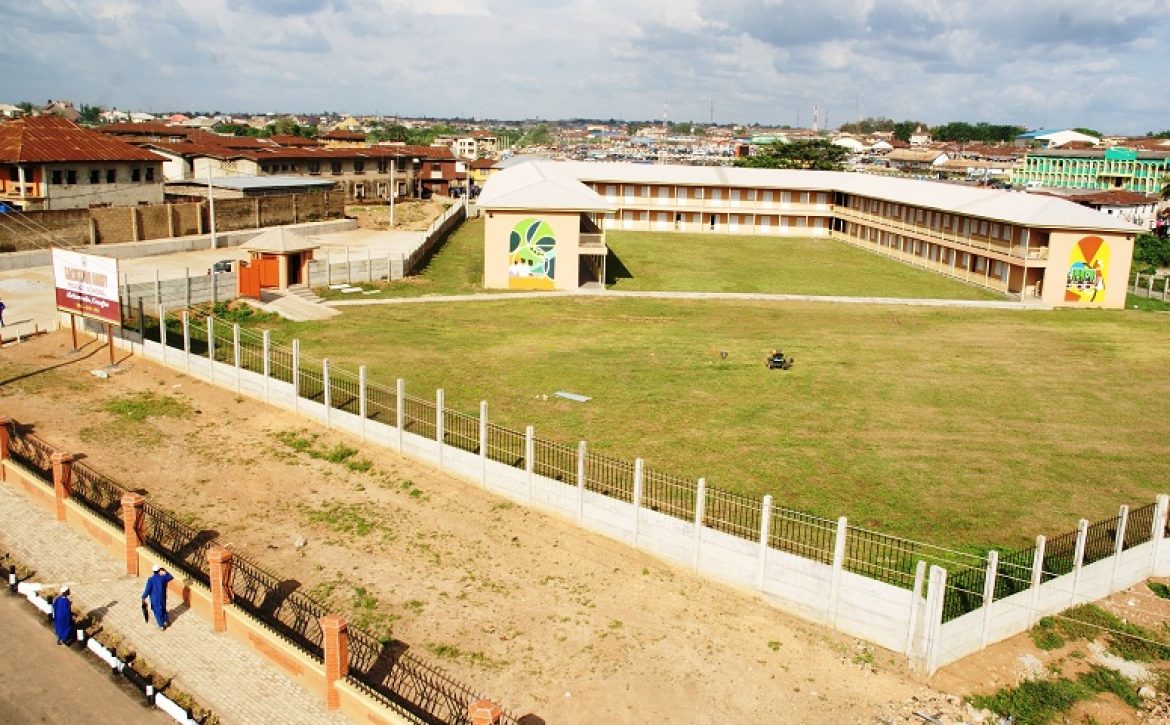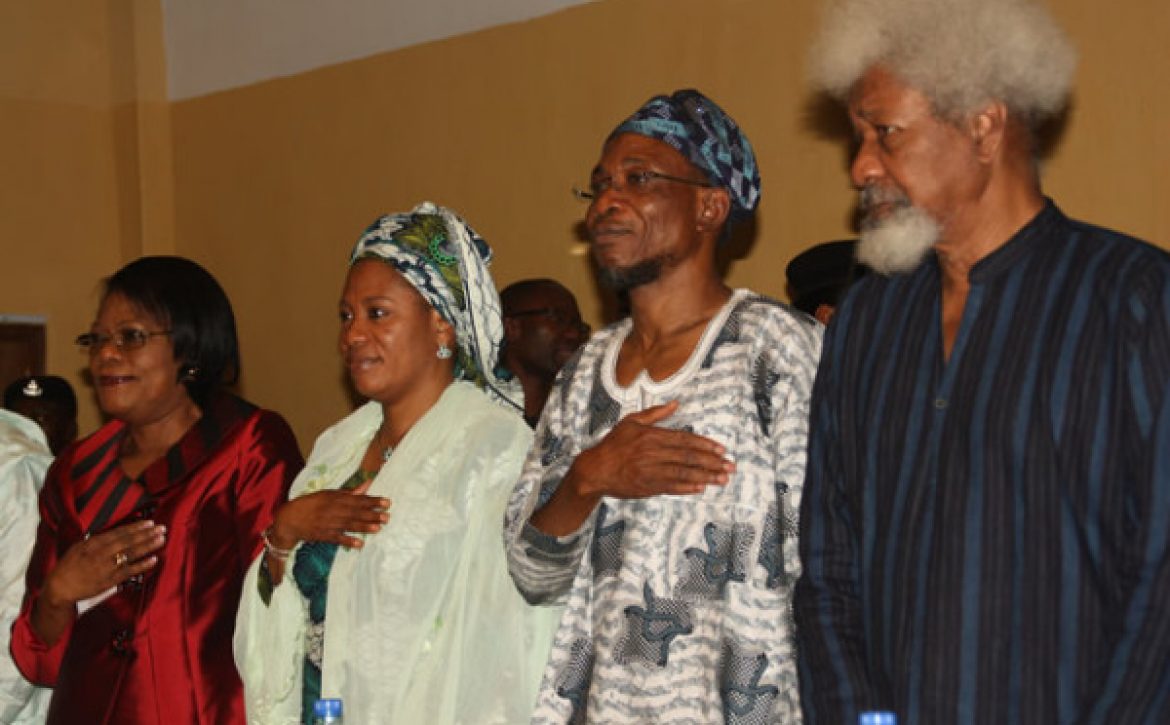 Local government chairmen in Osun yesterday felicitated with Muslim faithful in the state on this year’s Eid-el-Kabir celebration.
Local government chairmen in Osun yesterday felicitated with Muslim faithful in the state on this year’s Eid-el-Kabir celebration.
They also reaffirmed their commitment to the administration of Governor Rauf Aregbesola in its efforts at turning around the fortunes of the state.
In a statement issued and signed in Osogbo by the Chairman, Forum of Local Government Chairmen in the state, Kunle Ayantoye, said the government of the state deserves commendation for the purposeful leadership and systematic execution of people-oriented programmes.
The forum appreciated the governor and the state House of Assembly for the confidence reposed in them by extending their tenure for another six months.
“We are always proud to be associated with the purposeful and dynamic leadership of Governor Rauf Aregbesola in the last few years.
“We have partnered progressively with the state government right from inception. We acknowledged with greater appreciation, the full powers the government accorded us that has translated to unprecedented development at the grassroots level.
“The partnership is working; for example, we were able to save in collaboration with the state government to tar 10kms stretch of road in the 30 local government areas of the state.
“This is aside the other road projects and infrastructural development embarked upon by each council area. The relationship has been very perfect with the state legislature that has always provided the necessary and enabling law for our administration.”
On recent developments in the education sector of the state, where conventional primary and secondary schools were remodelled into elementary, middle and high schools, the forum pleads for understanding among all stakeholders.
“We are confident that the current wind will blow us all well, irrespective of our standing in the society as changes are always accompanied by initial scepticism.
“Residents of this state should by now understand and trust the governor for his high level of sincerity. It is important for all school proprietors that are bothered by the new development to continue engaging government in talks for meaningful results.”
The forum also extends greetings to all residents of the state particularly, the Muslim faithful on the occasion of Eid-el-Kabir celebration and sues for continued harmonious coexistence among all religious adherents in the state.
“We felicitate with our Muslim brethren on this year’s Eid-el-Kabir celebration, we pray Almighty Allah to continue to bless the state and give her residents good health to enjoy the yields of this people-oriented government.
“We have come a long way to determine whatever we see today; never should religious considerations be our problem. Our case is different here; we have always worked together as a people in our efforts to uplift our living conditions.
“And in the annals of the state we have never had it so good. We should continue to explore our areas of strength,” the forum said.
NATIONAL MIRROR
Category: General

A conducive physical atmosphere aids learning. The State is revamping public school infrastructure by building new school structures to reflect the recommendations of the Osun Education Summit. It is a radical idea to provide the best in terms of infrastructural facilities for the schools.
Elementary, Middle and High Schools are currently being built across the 30 Local Government Areas in the State. They are state of the art schools with dinning halls, potable water supply system with standard toilets facilities, library, recreation centre and computer laboratory.
Dilapidated school structures that pose dangers to pupils have been pulled down and blocks of classroom in some primary schools are to be built to provide more space for the projected school enrollment. The school infrastructure project has a great deal of local content component as materials and artisans are being sourced locally for the growth of the state economy.
Model Elementary School
The need to provide world class learning environment necessitates the on-going building of Model Elementary School at Isale Agbara in Osogbo and 9 other locations across the State. This is a state-of-the-art structure that will accommodate 900 pupils, with recreational facilities, library and computer laboratory. It is a neighbourhood school for pupils of ages 6-9, in the first grade to the fourth grade that is the present primaries one to four.
Under the first phase, a total of about 50 of these structures are to be constructed across the State. The present government is committed to building over 100 of these elementary schools.
Model Middle School
In a similar fashion, government is presently building 14 Middle Schools across the State of Osun. One of these is the Middle School at Alekuwodo, Osogbo, completed, furnished and ready for use. It is also a-state-of-the-art structure with accommodation provision for 900-1000 students.
The Middle school is for the fifth to the ninth grade which is the present primaries 5-6 and the Junior Secondary School (JSS 1 – III) in the age ranges of 10-14 years.
These Middle Schools will be replete with all infrastructural facilities suited for the age range of the students as well as teachers. Government is committed to build 50 of such schools disturbed across the State.
Model High School
Students in the high schools are within the age bracket of 15 to 17 years. This category is currently known as SSS 1-3 but will henceforth be known as Grades 10-12. The infrastructural facilities have been designed to accommodate 3000 students. Other facilities in consonance with international academic standard will include a standard football pitch, recreational facilities, laboratories, libraries, food court and examination hall to sit a minimum of 1000 students. Academic activities would run from 8am – 5pm.
Private investors would be encouraged to build students’ hostels and staff quarters on agreeable terms and conditions. The high schools would be sited on the premises of old schools with large grounds of not less than 10 hectares.
Construction work on a High School model is currently going on in Ejigbo while contract for additional 10 were recently awarded in various locations across the State. Government is committed to build a total of 20 High Schools in the first phase.
OPPORTUNITIES
Enormous opportunities abound in this school infrastructure revamp programme. A total of N30 billion is projected to be spent under this programme. Aside from the unquantifiable benefits to the students and teachers, the commercial and socio-economic benefits to the State are unprecedented. Local content is being embedded in the project.
A great deal of local artisans such as bricklayers, iron benders, and labour are being engaged under the O-SCHOOL initiative. Materials are being sourced locally and a number of sand suppliers, wood suppliers and local contractors are also partaking in the programme.
In a similar vein, capacity building and enhancement training workshop was organised by the O-SCHOOL Committee for 300 painters with the aim of equipping and engaging them to provide standard services for the need of this laudable education project. Certificate of participation were also issued to the participants.
The aesthetic value the project is adding to the State cannot also be wished aside. Beautiful and standard structures are springing up all over the State.
Let us give progress and change a chance.
Osun a dara!
Italian interns on inter-cultural exchange programme in Amuwo Odofin Local Government and the Chairman of the local government, Comrade Ayodele Adewale, recently paid a courtesy visit to Ogbeni Rauf Aregbesola
The essence of the visit, according to the council boss, amongst other things was for the interns to know the history, culture and the people of the state of Osun.
Thus, the interns were taken to some historical and tourist centres. The sites visited are: Erin Ijesha Waterfalls and Osun Osogbo Groove, amongst others.
Comrade Adewale stated in a chat that the inter-cultural exchange programme was necessary for development.
“What we do is to expose other climes to see the various advantages in the country as well as enjoy the hospitality of Nigerians”, he noted.
Also speaking, Mr. Gugo Gori, one of the Italian interns, stated that their visit to the State of Osun has further emphasized the fact that there are potentials in the State of Osun and by extension, Nigeria.
They also expressed delight on various cultural and historical sites visited, and stated that the experience gained would linger on.
GAZELLE NEWS
 The governor of the State of Osun, Rauf Aregbesola has reiterated that the religion of Islam is glaring antithesis of violence in all its forms and variance.
The governor of the State of Osun, Rauf Aregbesola has reiterated that the religion of Islam is glaring antithesis of violence in all its forms and variance.
This was the theme of sallah message delivered by the Governor of the State of Osun, Ogbeni Rauf Aregbesola to all Muslim faithful today.
Aregbesola, who spoke at the Oke Baale Prayer Ground, Osogbo, said it should baffle any genuine Muslim that people unleash violence and terror on people in the name of Islam.
He said contrary to the what many think, Islam is not and has never been a violent religion, wondering why a rational human being, who also submits to the dictate of the religion should engage in violence in whatever form or manner it may take.
“Islam is a religion that preaches against violence. Islam in totally against any form ofinhuman behaviours, violence, thuggery, killing and blood-letting.
“An individual, who calls himself a Muslim and engages in violence and other anti-social vices, is not a good Muslim, neither is he qualified to be called a Muslim.
“Islam as a religion discourages violence in all its forms and variance. Islam does not even encourage revenge.” Aregbesola said.
He wonders where some people get the teaching with which they behave in inhumane manners, unleashing violence on innocent people.
He added that Islam has come to aid the course of humanity and is in contrast to what some renegades are projecting it to non-Muslims.
Earlier in his sermon, the Imam, Alhaji Musa Animasahun, called on both the leaders and the follower to be good behaviour.
Animasahun, who stood in for the Chief Imam of Osogbo land and the Chairman of the League of Imam and Alfa, Sheikh Mustapha Ajisafe, said Muslims must be persevering, tolerant and honest in whatever they do.
“Our leaders, political and religious must lead with the fear of God in their hearts. Leaders must be honest and followers sincere.
“If we uphold truth, honesty, perseverance and good deeds, our state and nation will progress, develop and grow in leaps and bounds,” Animashaun said.
NIGERIA POLITICS ONLINE
 Permit me a space in your widely-read newspaper to comment on the criticisms being faced by the present administration in Osun State.
Permit me a space in your widely-read newspaper to comment on the criticisms being faced by the present administration in Osun State.
I wish to implore all meaningful citizens of the state to give the present administration, under the leadership of Mr Rauf Aregbesola, a breathing space, to continue its transformation agenda, which it has embarked upon.
As a citizen of the state, it saddens my heart how we have put religious and political sentiments into issues that are non-trivial, most especially, in the education sector. We should see the government’s restructuring programme as a positive step in the right direction, aimed at reviving the educational decadence in the state, and which will bring development to the state in terms of laying a solid educational foundation for the upcoming generations.
Aregbesola is learned. As a leader, he believes in the importance of education in the society. I would advise our religious faithful to join hands with the present administration, to steer the wheel of the state in all sectors to greater heights.
We should also have it in mind that the world is continuously evolving, and we should not be retrogressing in Osun.
I would also challenge the government of Osun State to create a conducive learning environment for the schools by providing state-of-the-art facilities, as well as the renovation of the existing facilities, improving the welfare of teachers, employing certified teachers with great teaching skills, as well as the re-training of teachers as at when due, in order to meet the challenges of the students.
Therefore, we should give the government a chance to succeed.
Adeolu Moronkeji via THE TRIBUNE
Governor Rauf Aregbesola of Osun said that Nigeria needed peace, security and cooperation among its diverse peoples to prosper.
The governor in his Eid-el-Kabir message, signed by Mr Semiu Okanlawon, the Director of Communication in the Governor’s Office.urged Muslims to live in peace, while exhibiting tolerance towards adherents of other faiths.
Aregbesola, however, called on the adherents of all religions to protect the sanctity of human life, saying in all the Scriptures, God never commanded or appointed anyone as judge over other human beings.
“Political leaders and followers, religious leaders and their adherents must come together and forge a harmonious relationship for the love of their country, as preached by Prophet Muhammad,’’ he said.
Aregbesola urged the people of the state “to live in peace and extend the hands of fellowship to their neighbours’’.
He called on the Muslim faithful to emulate Prophet Ibrahim and his son, whose unshaken belief in perseverance and fulfilment of God’s salvation, everlasting and divine compensation was unparalleled.
Besides, Gov. Musa Kwankwaso of Kano State called on Muslims to follow the teachings of the festival, which included sacrifice and total obedience to the will of Allah.
In a statement issued by his Director of Press and Public Relations Malam Halilu Dantiye, the governor urged Muslims to celebrate the festival peacefully, while praying for the peace and prosperity of the country.
He thanked the citizens of Kano State for their cooperation and support which, he said, resulted in the successes which his administration had so far recorded.
In his message, Mr Yomi Awoniyi, Kogi’s Deputy Governor, called on Muslims to use the Eid-el-Kabir celebration to build harmonious relationships with their neighbours.
Awoniyi, in a statement issued in Lokoja by his Press Secretary, Mr Michael Abu, said that the celebration was a period for displaying the virtues of tolerance and understanding.
He called on Muslims to follow Allah’s teachings, urging them not to see the period as a time for merriment only but to see it as an opportunity to engage in sober reflections on the significance of the season.
Awoniyi advised Muslims and, indeed, all Nigerians to eschew all forms of vices that could hinder peace and their harmonious relations with people of other faiths.
“We must continue to appreciate the fact that our strength as a nation lies in our ethnic and religious diversities,” he said.
THE GUARDIAN
 Let us set some facts right. One, the state government owns the Baptist Girls High School that most of the quarrel is about. The state government picks its salary bills, the running costs and pays the WAEC fees of the kids over the years. The Baptist appellation on the school’s billboard and letterhead is historical as the school was founded by missionaries. It was however taken over by the Federal Government following a recommendation of the 1967 Asabia Commission on education.
Let us set some facts right. One, the state government owns the Baptist Girls High School that most of the quarrel is about. The state government picks its salary bills, the running costs and pays the WAEC fees of the kids over the years. The Baptist appellation on the school’s billboard and letterhead is historical as the school was founded by missionaries. It was however taken over by the Federal Government following a recommendation of the 1967 Asabia Commission on education.
According to Carl Le Van, Professor of School of International Service in the American University who has studied Nigerian educational system for over forty years, the decision to centralize schools was borne out of the need to address the “vast disparity between private and public Institutions” in the country as well as to curb corruption.
The very influential Simeon Adebo Commission of 1971 later recommended that government tackles the “cumbrous patchwork” that was its definition of the national educational policy at the time and proposed “complete government control for planning, financing and running of the schools”.
The Supreme Military Council responded by issuing a decree in 1972 giving the Federal Government increased authority over education and giving it supremacy in running the schools. Those authorities were ceded to state governments over time especially with state’s counter-party funding of the Universal Basic Education since 1977.
It is important to go this far into the past to make the reader appreciate that the sudden bolt out of the blue from the Baptists that the state government’s action “threatens the foundation of the Christian faith” is way, way off the mark. The schools in question are government schools enjoying government’s generous subventions. And in fact, the Baptist schools that formed the hub of these protests receive more subventions from the government than the Fakunle Comprehensive whose pupils it rejects.
The second point is the state government’s new educational policy merging some of the existing schools and building new ones. A few are already in place and the government just came back from the bond market where its issue of N10 billion was oversubscribed. The money is strictly for building schools and invigorating the educational system in the state generally.
Now in deciding which school is scrapped and which is retained, the state government took care not to dissolve schools with overt Christian and Muslim nomenclatures. So all the Ansarudeens and the Christ Apostolics stayed, just so as not to stir sleeping dogs.
Fakunle Comprehensive School, a mixed school, was at the onset of this administration met in a sordid state with fallen structures, no thanks to years of neglect .The current administration, as part of its School Infrastructure development programme decided to merge Fakunle and some other mixed schools with the Baptist High in an effort to build a New 3000 capacity Model High School.
This effectively meant a change in the status of Baptist from a girls-only to a mixed school at the same time. Now, the mixed school policy has been the norm in the state since 1980 under the Old Oyo state.
Since then, all government owned schools were changed from single sex to mixed. Ilesha Grammar School was in fact a Boys school until it was changed to a mixed school in the 70s by government fiat.
The Baptist schools in Osun are going through that change now. It could be unpleasant as changes are wont to be and I don’t blame them for reacting. But those reactions should be measured and the language should not be as far reaching as to accuse the government of religious persecution and attempts to “destroy the heritage of Christians”.
Now, some of the Fakunle Comprehensive girls have been wearing their hijab to school while in Fakunle. (The founder of Fakunle named the school after himself. He was paid off when the school was taken over by government and converted to a public school in the 1970s.
I assume the owners of the Baptist High were also compensated. The girls simply continued wearing their headscarf in their new environment.
The Baptists and a few other churches feel offended at this and they think if the kids are going to be in a school with a Christian name, then they should drop their hijab. Well, that argument has a converse that is true, namely, if kids sent to schools bearing Muslim names get there, they should not bring a chaplet or a cross, much less a Bible to school.
To me, these are outright matters of intolerance. They are so simple that a child can understand it. There is no way you can legitimately find faults with a government policy that makes Sadiat and Sharon sit on the same school bench.
Another point raised is that the Fakunle children are bad to the bones and will corrupt the girls of the Baptist High. They said the boys are already looking at the Baptist girls. I leave the reader to appraise that mirthful one.
When Aregbesola came on in 2010, Osun state was 34 in WAEC results out of Nigeria’s 36 states. Right now the state is number 18. Primary school enrolment has rocketed up to the highest in the country, thanks to the free lunch meal programme (OMEAL) , to 254,000 kids and The free indigenous and standardized school uniforms for all 750,000 students in Primary and Secondary Schools.
And in fact, the majority of people behind this educational thrust are die-hard Christians. The Commissioner for education who is also the Deputy Governor is a Christian. In fact, she is an MFM heavy with a church in her official quarters. The seasoned Commissioner for Finance and the Attorney General of the state are Christians with Redeemed and CAC roots and who can overestimate the influence of such officials in a state.
Uncle Bola Ige’s son, Muyiwa, is the Commissioner for Lands. In all, there are more Christians than Muslims in that cabinet.I think Christians in the state should demonstrate more confidence in these representatives of theirs in government.
Osun CAN, by acting as they did last week and even issuing an ultimatum to the government, they put their brothers and sisters in government to shame by suggesting that they cannot be trusted to defend crucial Christian interests in the government. And that means they are thought of as either traitors or idiots or both, and I know that they are neither!
Osun is a state where the two religions have incredible harmony. If you are a religiously hostile person, I advise you rid your mind of such bias before you come to Oshogbo because chances are that you might say something silly, and quite unwittingly too, against the religion of someone who respects you.
There is no way of telling Christians and Muslims apart at first sight in that environment. It is disturbing to read comments on social media from people who don’t know what is really going on there and they are talking of the governor being a Muslim extremist and so forth. It is just nonsense. The man’s brother-land sister are Christians and they relate pretty well.
Well, it could be that leading a state of such religious diversity must be accompanied by this kind of the religious equivalent of opposition politics and maybe it is inevitable. Maybe it is a natural means of creating constant religious checks and balances. Today a Muslim is there, the next it will be a Christian and he will take his flak too.
But whatever the season and however we seek to balance the scale, we should know that we have to preserve our dignity as a people and not set the house ablaze because we want to get rid of infesting cockroaches. Governor Aregbesola is doing well in that state. He should be encouraged to do better and not be attacked with virulent politics couched in incendiary religious language.
JOHN OGUNLELA (johnogunlela@gmail.com)
 Ila Orangun is an ancient town and holds prime place in the history of Yoruba. It lies to the north east of the State of Osun quite near the border with Kwara State on 8° 1′North and longitude 04°54′East. It is the more populous sister-city (and sister-kingdom) of Òkè-Ìlá Òràngún located about 7.5 miles (12 km) to the northeast. Ila enjoys rainfall ranging from 45 to 55 inches annually. It is the headquarters of Ila Local Government.
Ila Orangun is an ancient town and holds prime place in the history of Yoruba. It lies to the north east of the State of Osun quite near the border with Kwara State on 8° 1′North and longitude 04°54′East. It is the more populous sister-city (and sister-kingdom) of Òkè-Ìlá Òràngún located about 7.5 miles (12 km) to the northeast. Ila enjoys rainfall ranging from 45 to 55 inches annually. It is the headquarters of Ila Local Government.
Ila- Orangun has a distinct, autonomous cultural group of Yoruba speaking people known as the Igbominas. It could be rightly assumed that Igbominaland is that area of land currently occupied by the people called Igbomina
Saw-milling is the most common industry in Ila. Others include carpentry, blacksmithing and welding. Commercial activities also keep a large section of the population busy. Popular tourist attractions include the Ila-Oke Spot where an Oba was said to have disappeared, the Community Fish Pond and Idi Ogun Oja. The traditional title of the Oba is the Orangun of Ila .
Ila hosts the State of Osun’s College of Education and a State Hospital.
For more on Town in the State of Osun…visit www.osun.gov.ng
The vision of this present administration under Ogbeni Rauf Aregbesola before coming to government was to radically increase access to Universal Basic Education in our society. This is in furtherance of the vision of the former Western Region Government under the late sage Chief Obafemi Awolowo. This is also in line with Millennium Development Goal Two (MDG 2) of achieving Universal Primary Education, which goes in consonance with Aregbesola’s programme of promoting functional education.
(From L-R) The Deputy Governor, The First Lady, The Governor and Professor Wole Soyinka
The government of Aregbesola in February 2011, two months after assumption of office, organized a world-class education summit to chart a new way forward in the educational sector of the State of Osun in conformity with the evolving trends in the field. The summit which was chaired by Nobel Laureate, Prof Wole Soyinka had in attendance other experienced stakeholders who proffered solutions to the perennial problems being experienced in the country and Osun in particular.
Stakeholders agreed on having three classification of schools under basic education , these are elementary, middle and high rather than the existing primary, junior and secondary levels. A comprehensive overhaul of physical and human component of the education system was also recommended.
As observed, the physical infrastructure component of these reclassification is being carried out systematically with the building of elementary, middle and high schools. The human and social component such as recruitment of teachers, provision of instructional materials, psychological and social support through value re-orientation, revival of ideals of hard work, honesty, discipline, determination, revival of Boys and Girls Clubs, calisthenics activities are simultaneously being introduced.
For a concise report on government efforts so far on education reforms, please visit www.osun.gov.ng
Religious protests against Osun’s public schools reclassification divert attention from a key development programme
Protests by religious blocs, against the new Osun State schools reclassification policy, divert attention from perhaps the most revolutionary education policy since Chief Obafemi Awolowo’s free primary education of 1955.
This is grave and unfortunate; for there is a limit to which people should misdirect themselves and willfully gamble with the future of their children and wards.
Yet, the Osun government would appear to share part of the blame. It is either it had not consulted widely enough with key opinion moulders or had not, sufficiently enough, enlightened the mass of the people – or both – before launching the programme. Otherwise, the protests, across religious lines, should not be.
The government should therefore fuse into its education reforms as many partisan or religious views as are reasonable. But it must not abandon its reforms, simply because some political and religious partisans growl at them. The future generation would not forgive it, if it did.
If the programme is meant to better the future of children in Osun State – and there is absolutely no doubt that it is – then, with good mass enlightenment, it is only a matter of time before the majority of the people buy into it. After all, as Jeremy Bentham stipulated, government exists for the greatest happiness of the greatest number.
Yet, before the reclassification policy can be reasonably discussed, it ought to be properly understood.
The genesis was the cascading fall in educational standard in the state, so much so that the state came among the laggards in Junior Secondary School (JSS) and Senior Secondary School (SSS) examination results. That prompted an education summit, which recommended the current reforms.
The imperative to properly fund education, merged with the reality that resources are, at the best of times, scarce, necessitated the restructuring of education infrastructure, starting with school buildings. Instead of rebuilding each of the existing, decrepit schools, therefore, the government would appear sold on school clusters to save costs and also ensure the economies of scale.
Also, according to government sources, the classification into Elementary (Primary 1-4), Middle (Primary 5-6, and JSS 1-3) and High (SSS 1-3) schools, has to do with the distance covered by a child before reaching school. That means that the 100 elementary schools being built would be basically neighbourhood schools, to which every minor involved would easily trek, the 49 middle schools are a bit more distant but could be accessed by short transport. The high schools are the farthest; but then the more mature are envisaged to better cope with the distance.
With this new paradigm, there must be need to merge schools, on the sheer economics of it all – and that appears to cause all the raucous. The sentiments by the Christian missions (the Baptists and Methodists kicking against their schools being merged) and Muslims in Iwo staking the rights of their children and wards to wear the hijab in schools bearing Christian names are understandable, even if some of the demands border on being unreasonable.
The Baptist kicking against Methodists is queer – can’t they sink their sectarian differences in one church for the sake of their children’s future? Muslims insisting on wearing the hijab in a ‘Christian’ school betrays lack of respect and crass intolerance that appear un-Yoruba-like. The Osun State government should, however, engage these religious partisans and see how it can accommodate their worries.
Still, the religious “warriors” must not push their luck too far. Most of these schools are “missionary” schools only in name, by virtue of founding. Since the government took over the schools, the missionaries have no dime in their running. So, as the government respects their historic links to these schools, they should also respect the government’s right to implement programmes for the citizens who elected it.
The government should engage all the aggrieved. But it must press on with the fundaments of its policy. Like Awo, it would not be judged by the sentimental babble of the present, but by the genuine awe of an appreciative coming generation.
EDITORIAL BY THE NATION

